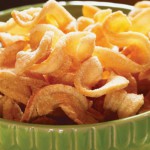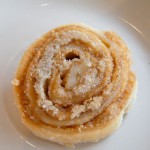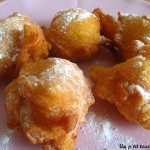Lyrics in french to the traditional French-Canadian song “Alouette,” followed by an English translation of the song, courtesy of the informant:
French Version
Refrain:
Alouette, gentille alouette,
Alouette, je te plumerai.
Je te plumerai la tête. Je te plumerai la tête.
Et la tête! Et la tête!
Alouette! Alouette!
A-a-a-a-ah (sounds like Aaaa)
Refrain
Je te plumerai le bec. Je te plumerai le bec.
Et le bec! x2
Et la tête! x2
Alouette! x2
A-a-a-a-ah
Refrain
Je te plumerai les yeux. Je te plumerai les yeux.
Et les yeux! x2
Et le bec! x2
Et la tête! x2
Alouette! x2
A-a-a-a-ah
Refrain
Je te plumerai le cou. Je te plumerai le cou.
Et le cou! x2
Et les yeux! x2
Et le bec! x2
Et la tête! x2
Alouette! x2
A-a-a-a-ah
Refrain
Je te plumerai les ailes. Je te plumerai les ailes.
Et les ailes! x2
Et le cou! x2
Et les yeux! x2
Et le bec! x2
Et la tête! x2
Alouette! x2
A-a-a-a-ah
Refrain
Je te plumerai les pattes. Je te plumerai les pattes.
Et les pattes! x2
Et les ailes! x2
Et le cou! x2
Et les yeux! x2
Et le bec! x2
Et la tête! x2
Alouette! x2
A-a-a-a-ah
Refrain
Je te plumerai la queue. Je te plumerai la queue.
Et la queue! x2
Et les pattes! x2
Et les ailes! x2
Et le cou! x2
Et les yeux! x2
Et le bec! x2
Et la tête! x2
Alouette! x2
A-a-a-a-ah
Refrain
Je te plumerai le dos. Je te plumerai le dos.
Et le dos! x2
Et la queue! x2
Et les pattes! x2
Et les ailes! x2
Et le cou! x2
Et les yeux! x2
Et le bec! x2
Et la tête! x2
Alouette! x2
A-a-a-a-ah
Refrain
English Version
Refrain
Lark, gentle lark,
Lark, I will pluck you (I will pluck out you’re feathers).
I will pluck your head. I will pluck your head.
And your head! And your head!
Laaark! Laaark!
O-o-o-o-oh
Refrain
I will pluck your beak. I will pluck your beak.
And your beak! x2
And your head! x2
Laaaark! Laaark!
O-o-o-o-oh
Refrain
I will pluck (out) your eyes. I will pluck your eyes.
And your eyes! x2
And your beak! x2
And your head! x2
Laaark! Laaark!
O-o-o-o-oh
Refrain
I will pluck your neck. I will pluck your neck.
And your neck! x2
And your eyes! x2
And your beak! x2
And your head! x2
Laaark! Laaark!
O-o-o-o-oh
Refrain
I will pluck your wings. I will pluck your wings.
And your wings! x2
And your neck! x2
And your eyes! x2
And your beak! x2
And your head! x2
Laaark! Laaark!
O-o-o-o-oh
Refrain
I will pluck your feet. I will pluck your feet.
And your feet! x2
And your wings! x2
And your neck! x2
And your eyes! x2
And your beak! x2
And your head! x2
Laaark! Laaark!
O-o-o-o-oh
Refrain
I will pluck your tail. I will pluck your tail.
And your tail! x2
And your feet! x2
And your wings! x2
And your neck! x2
And your eyes! x2
And your beak! x2
And your head! x2
Laaark! x2
O-o-o-o-oh
Refrain
I will pluck your back. I will pluck your back.
And your back! x2
And your tail! x2
And your feet! x2
And your wings! x2
And your neck! x2
And your eyes! x2
And your beak! x2
And your head! x2
Laaark! x2
O-o-o-o-oh
Refrain
Informant’s response when asked about the song.
Informant: “The bird called an alouette is a morning lark, they make a big noise, you hear them in the morning on lakes and stuff. That song Alouette, today is mostly a French Canadian beer drinking song. Um, but apparently it goes back to the fur trapping days and the people they called “les voyagers,” I don’t know if you are familiar with the term. “Les voyageurs” were fur trappers essentially. They would go wandering around all over the north American countryside trapping small critters for pelts and would bring them in and they made a living that way and of course they explored an awful lot of what was the northeastern, north American continent looking for plentiful trapping areas. Anyways, that song was useful in helping them keep a cadence when they were canoeing because that was one of the best ways to get around, as there are an awful lot of lakes in that part of the country and rivers as well. A canoe, especially with two men in it paddling, could cover some pretty significant ground, so they would sing that song to keep a cadence as they paddled the canoe. And so anyways, now you hear it all the time, in Canada anyways, they use it for teaching French to English kids, and actually I think they might use it for French Canadian kids too when they’re little. But anyways, of course the song is about catching the lark or describing to the lark you are trying to catch what you’re going to do to it, by plucking it. You know, all over, you’re plucking its head, you’re plucking its beak, you’re plucking its eyes, you’re plucking its neck, you’re plucking its tail, all these things, and of course it means that there are just more and more verses to the song. So, “Alouette, gentille alouette, Alouette, je te plumerai,” means alouette, alouette I’m going to pluck you. Right? “Je te plumerai la tête. Je te plumerai la tête,” translates to “I’m pulling the feather out of your head, I’m pulling the feathers out of your head, and the head, and the head” and so on and so on, so anytime you can name a part of the body then you pluck that part of the body and there is another verse to the song, so it can literally go on forever. So, if you’re trying to row across Lake Huron, it might take a long time so you could sing that over and over again and keep your cadence and paddle across the lake. So there you go.”
The informant is a middle-aged man, who lived in France for about a year and then in Montreal for about two years. He speaks French fluently and has French Canadian heritage, as his family traveled from French Canada in the 40s and 50s to Maine and Connecticut. He appreciates and enjoys learning about history and French Canadian culture.
The informant first heard this song when he was around ten or twelve years old playing youth hockey in Harford,Connecticut. A French Canadian men’s league would also play at the rink where he would practice, and he remembers one occasion where they were drinking beer and singing. In addition, his uncle is from Moncton, New Brunswick, and he taught the informant the words to the song. The informant remembers this song because as he said “my family is French Canadian and it reminds me of where I come from.”
The informant himself does not often sing the song, though he may hum the tune while performing yard work or other construction work in his home.
In addition to the background given by the informant, while looking up larks, I found that they were common game in French Canada. The informant affirmed this, stating “they ate a lot of ‘em up there.” I found that this song was also sung after the lark had been caught and the performers were cleaning the bird to get it ready to eat.
As a child, I remember that my father would sing this tune and after listening to him for a while, I learned how to sing it as well without knowing what the words meant. I liked the song because it has a very upbeat melody and seemed like a happy song. It wasn’t until later that I learned that the song was about plucking all of the feathers off of a bird. The dissonance between the melody and the meaning of the lyrics was surprising to say the least. However, it was interesting to discover the cultural context behind this song because it serves a couple of very practical functions: as a cadence, as a song to pass time while cleaning game for dinner, and as a song to teach children the names of body parts.




